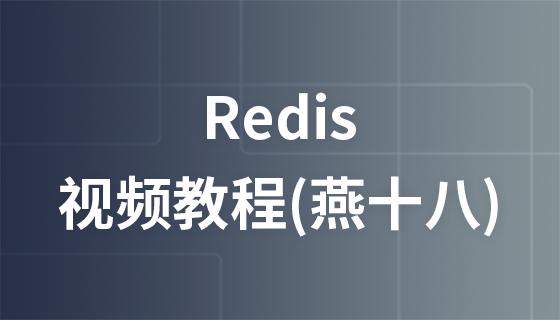
本文講的是當redis設定了最大記憶體之後,快取中的資料集大小超過了一定比例,實施的淘汰策略,不是刪除過期鍵的策略,雖然兩者非常相似。 (建議:redis影片教學)
在redis 中,允許使用者設定最大使用記憶體大小透過設定redis.conf中的maxmemory這個值來開啟記憶體淘汰功能,在記憶體限定的情況下是很有用的。
設定最大記憶體大小可以保證redis對外提供穩健服務。
redis 記憶體資料集大小上升到一定大小的時候,就會施行資料淘汰策略。 redis 提供6種資料淘汰策略透過maxmemory-policy設定策略:
volatile-lru:從已設定過期時間的資料集(server.db[i].expires)中挑選最近最少使用的資料淘汰
volatile-ttl:從已設定過期時間的資料集(server.db[i].expires)中挑選將要過期的資料淘汰
volatile-random:從已設定過期時間的資料集(server.db[i].expires)中任意選擇資料淘汰
allkeys-lru:從資料集(server.db[i].dict)中挑選最近最少使用的資料淘汰
allkeys-random:從資料集(server.db[i].dict)中任意選擇資料淘汰
no-enviction(驅逐):禁止驅逐資料
redis在確定驅逐某個鍵值對後,會刪除這個資料並將這個資料變更訊息發佈到本地(AOF 持久化)和從機(主從連接)
LRU 資料淘汰機制
在伺服器設定中儲存了lru 計數器server.lrulock,會定時(redis 定時程式serverCorn())更新,server.lrulock 的值是根據server.unixtime 計算出來的。
另外,從 struct redisObject 可以發現,每一個 redis 物件都會設定對應的 lru。可以想像的是,每一次存取資料的時候,會更新 redisObject.lru。
LRU 資料淘汰機制是這樣的:在資料集中隨機挑選幾個鍵值對,取出其中 lru 最大的鍵值對淘汰。所以,你會發現,redis 並不是保證取得所有資料集中最近最少使用(LRU)的鍵值對,而只是隨機挑選的幾個鍵值對中的。
// redisServer 保存了 lru 计数器
struct redisServer {
...
unsigned lruclock:22; /* Clock incrementing every minute, for LRU */
...
};
// 每一个 redis 对象都保存了 lru
#define REDIS_LRU_CLOCK_MAX ((1<<21)-1) /* Max value of obj->lru */
#define REDIS_LRU_CLOCK_RESOLUTION 10 /* LRU clock resolution in seconds */
typedef struct redisObject {
// 刚刚好 32 bits
// 对象的类型,字符串/列表/集合/哈希表
unsigned type:4;
// 未使用的两个位
unsigned notused:2; /* Not used */
// 编码的方式,redis 为了节省空间,提供多种方式来保存一个数据
// 譬如:“123456789” 会被存储为整数 123456789
unsigned encoding:4;
unsigned lru:22; /* lru time (relative to server.lruclock) */
// 引用数
int refcount;
// 数据指针
void *ptr;
} robj;
// redis 定时执行程序。联想:linux cron
int serverCron(struct aeEventLoop *eventLoop, long long id, void *clientData) {
......
/* We have just 22 bits per object for LRU information.
* So we use an (eventually wrapping) LRU clock with 10 seconds resolution.
* 2^22 bits with 10 seconds resolution is more or less 1.5 years.
*
* Note that even if this will wrap after 1.5 years it's not a problem,
* everything will still work but just some object will appear younger
* to Redis. But for this to happen a given object should never be touched
* for 1.5 years.
*
* Note that you can change the resolution altering the
* REDIS_LRU_CLOCK_RESOLUTION define.
*/
updateLRUClock();
......
}
// 更新服务器的 lru 计数器
void updateLRUClock(void) {
server.lruclock = (server.unixtime/REDIS_LRU_CLOCK_RESOLUTION) &
REDIS_LRU_CLOCK_MAX;
}TTL 資料淘汰機制
redis 資料集資料結構中保存了鍵值對過期時間的表,即 redisDb.expires。和 LRU 資料淘汰機制類似,TTL 資料淘汰機制是這樣的:從過期時間的表中隨機挑選幾個鍵值對,取出其中 ttl 最大的鍵值對淘汰。
同樣你會發現,redis 並不是保證取得所有過期時間的表中最快過期的鍵值對,而只是隨機挑選的幾個鍵值對中的。
總結
redis 每服務客戶端執行一個指令的時候,會偵測使用的記憶體是否超額。如果超額,即進行資料淘汰。
// 执行命令
int processCommand(redisClient *c) {
......
// 内存超额
/* Handle the maxmemory directive.
*
* First we try to free some memory if possible (if there are volatile
* keys in the dataset). If there are not the only thing we can do
* is returning an error. */
if (server.maxmemory) {
int retval = freeMemoryIfNeeded();
if ((c->cmd->flags & REDIS_CMD_DENYOOM) && retval == REDIS_ERR) {
flagTransaction(c);
addReply(c, shared.oomerr);
return REDIS_OK;
}
}
......
}
// 如果需要,是否一些内存
int freeMemoryIfNeeded(void) {
size_t mem_used, mem_tofree, mem_freed;
int slaves = listLength(server.slaves);
// redis 从机回复空间和 AOF 内存大小不计算入 redis 内存大小
/* Remove the size of slaves output buffers and AOF buffer from the
* count of used memory. */
mem_used = zmalloc_used_memory();
// 从机回复空间大小
if (slaves) {
listIter li;
listNode *ln;
listRewind(server.slaves,&li);
while((ln = listNext(&li))) {
redisClient *slave = listNodeValue(ln);
unsigned long obuf_bytes = getClientOutputBufferMemoryUsage(slave);
if (obuf_bytes > mem_used)
mem_used = 0;
else
mem_used -= obuf_bytes;
}
}
// server.aof_buf && server.aof_rewrite_buf_blocks
if (server.aof_state != REDIS_AOF_OFF) {
mem_used -= sdslen(server.aof_buf);
mem_used -= aofRewriteBufferSize();
}
// 内存是否超过设置大小
/* Check if we are over the memory limit. */
if (mem_used <= server.maxmemory) return REDIS_OK;
// redis 中可以设置内存超额策略
if (server.maxmemory_policy == REDIS_MAXMEMORY_NO_EVICTION)
return REDIS_ERR; /* We need to free memory, but policy forbids. */
/* Compute how much memory we need to free. */
mem_tofree = mem_used - server.maxmemory;
mem_freed = 0;
while (mem_freed < mem_tofree) {
int j, k, keys_freed = 0;
// 遍历所有数据集
for (j = 0; j < server.dbnum; j++) {
long bestval = 0; /* just to prevent warning */
sds bestkey = NULL;
struct dictEntry *de;
redisDb *db = server.db+j;
dict *dict;
// 不同的策略,选择的数据集不一样
if (server.maxmemory_policy == REDIS_MAXMEMORY_ALLKEYS_LRU ||
server.maxmemory_policy == REDIS_MAXMEMORY_ALLKEYS_RANDOM
{
dict = server.db[j].dict;
} else {
dict = server.db[j].expires;
}
// 数据集为空,继续下一个数据集
if (dictSize(dict) == 0) continue;
// 随机淘汰随机策略:随机挑选
/* volatile-random and allkeys-random policy */
if (server.maxmemory_policy == REDIS_MAXMEMORY_ALLKEYS_RANDOM ||
server.maxmemory_policy == REDIS_MAXMEMORY_VOLATILE_RANDOM)
{
de = dictGetRandomKey(dict);
bestkey = dictGetKey(de);
}
// LRU 策略:挑选最近最少使用的数据
/* volatile-lru and allkeys-lru policy */
else if (server.maxmemory_policy == REDIS_MAXMEMORY_ALLKEYS_LRU ||
server.maxmemory_policy == REDIS_MAXMEMORY_VOLATILE_LRU)
{
// server.maxmemory_samples 为随机挑选键值对次数
// 随机挑选 server.maxmemory_samples个键值对,驱逐最近最少使用的数据
for (k = 0; k < server.maxmemory_samples; k++) {
sds thiskey;
long thisval;
robj *o;
// 随机挑选键值对
de = dictGetRandomKey(dict);
// 获取键
thiskey = dictGetKey(de);
/* When policy is volatile-lru we need an additional lookup
* to locate the real key, as dict is set to db->expires. */
if (server.maxmemory_policy == REDIS_MAXMEMORY_VOLATILE_LRU)
de = dictFind(db->dict, thiskey);
o = dictGetVal(de);
// 计算数据的空闲时间
thisval = estimateObjectIdleTime(o);
// 当前键值空闲时间更长,则记录
/* Higher idle time is better candidate for deletion */
if (bestkey == NULL || thisval > bestval) {
bestkey = thiskey;
bestval = thisval;
}
}
}
// TTL 策略:挑选将要过期的数据
/* volatile-ttl */
else if (server.maxmemory_policy == REDIS_MAXMEMORY_VOLATILE_TTL) {
// server.maxmemory_samples 为随机挑选键值对次数
// 随机挑选 server.maxmemory_samples个键值对,驱逐最快要过期的数据
for (k = 0; k < server.maxmemory_samples; k++) {
sds thiskey;
long thisval;
de = dictGetRandomKey(dict);
thiskey = dictGetKey(de);
thisval = (long) dictGetVal(de);
/* Expire sooner (minor expire unix timestamp) is better
* candidate for deletion */
if (bestkey == NULL || thisval < bestval) {
bestkey = thiskey;
bestval = thisval;
}
}
}
// 删除选定的键值对
/* Finally remove the selected key. */
if (bestkey) {
long long delta;
robj *keyobj = createStringObject(bestkey,sdslen(bestkey));
// 发布数据更新消息,主要是 AOF 持久化和从机
propagateExpire(db,keyobj);
// 注意, propagateExpire() 可能会导致内存的分配, propagateExpire()
提前执行就是因为 redis 只计算 dbDelete() 释放的内存大小。倘若同时计算 dbDelete() 释放的内存
和 propagateExpire() 分配空间的大小,与此同时假设分配空间大于释放空间,就有可能永远退不出这个循环。
// 下面的代码会同时计算 dbDelete() 释放的内存和 propagateExpire() 分配空间的大小:
// propagateExpire(db,keyobj);
// delta = (long long) zmalloc_used_memory();
// dbDelete(db,keyobj);
// delta -= (long long) zmalloc_used_memory();
// mem_freed += delta;
/////////////////////////////////////////
/* We compute the amount of memory freed by dbDelete() alone.
* It is possible that actually the memory needed to propagate
* the DEL in AOF and replication link is greater than the one
* we are freeing removing the key, but we can't account for
* that otherwise we would never exit the loop.
*
* AOF and Output buffer memory will be freed eventually so
* we only care about memory used by the key space. */
// 只计算 dbDelete() 释放内存的大小
delta = (long long) zmalloc_used_memory();
dbDelete(db,keyobj);
delta -= (long long) zmalloc_used_memory();
mem_freed += delta;
server.stat_evictedkeys++;
// 将数据的删除通知所有的订阅客户端
notifyKeyspaceEvent(REDIS_NOTIFY_EVICTED, "evicted",
keyobj, db->id);
decrRefCount(keyobj);
keys_freed++;
// 将从机回复空间中的数据及时发送给从机
/* When the memory to free starts to be big enough, we may
* start spending so much time here that is impossible to
* deliver data to the slaves fast enough, so we force the
* transmission here inside the loop. */
if (slaves) flushSlavesOutputBuffers();
}
}
// 未能释放空间,且此时 redis 使用的内存大小依旧超额,失败返回
if (!keys_freed) return REDIS_ERR; /* nothing to free... */
}
return REDIS_OK;
}適用場景
下面看看幾種策略的適用場景:
#1、allkeys-lru: 如果我們的應用程式對快取的存取符合冪律分佈(也就是存在相對熱點資料),或者我們不太清楚我們應用的快取存取分佈狀況,我們可以選擇allkeys-lru策略。
2、allkeys-random: 如果我們的應用程式對於快取key的存取機率相等,則可以使用這個策略。
3、volatile-ttl: 這個策略使得我們可以向Redis提示哪些key比較適合被eviction。
另外,volatile-lru策略和volatile-random策略適合我們將一個Redis實例既應用於快取和又應用於持久化儲存的時候,然而我們也可以透過使用兩個Redis實例來達到相同的效果,值得一提的是將key設定過期時間實際上會消耗更多的內存,因此我們建議使用allkeys-lru策略從而更有效率的使用內存。
更多redis知識請關注redis入門教學欄位。
以上是redis資料淘汰策略詳解的詳細內容。更多資訊請關注PHP中文網其他相關文章!


